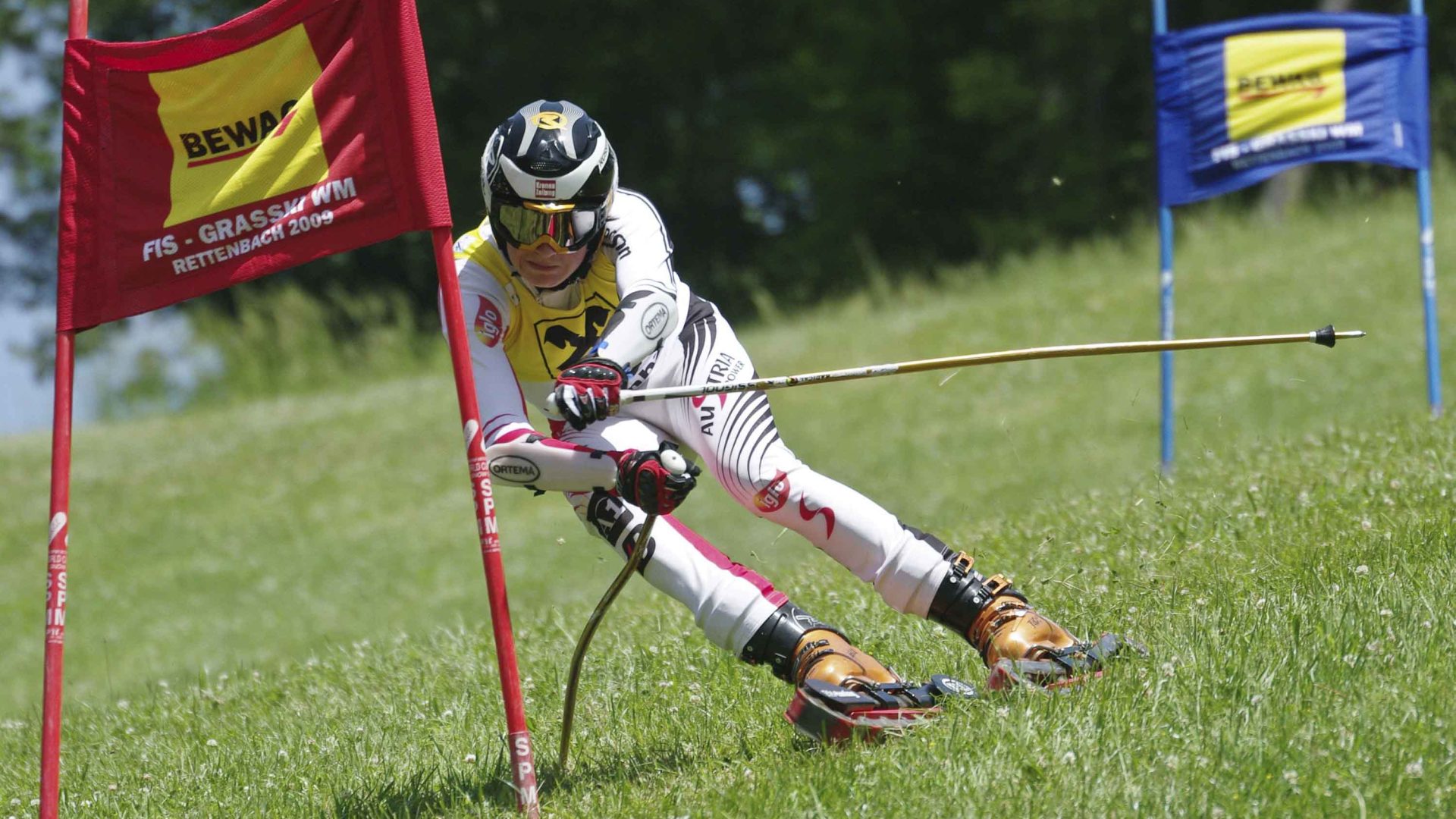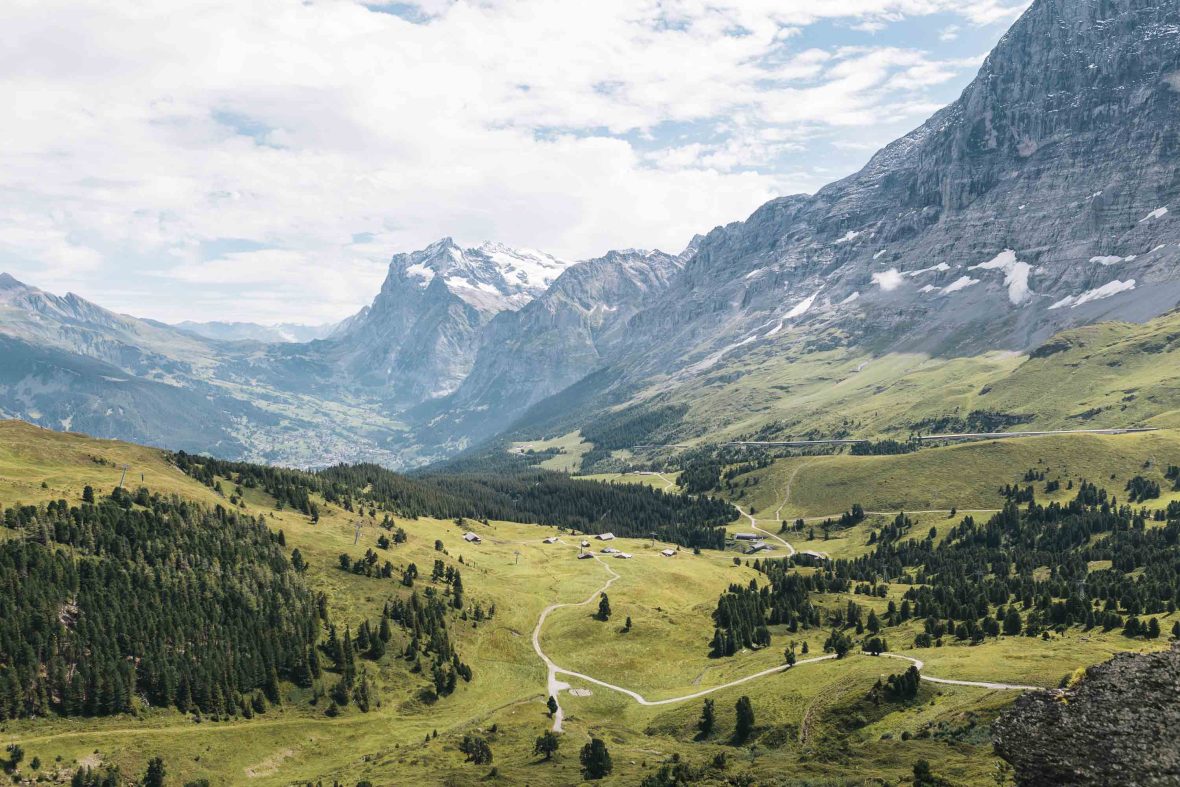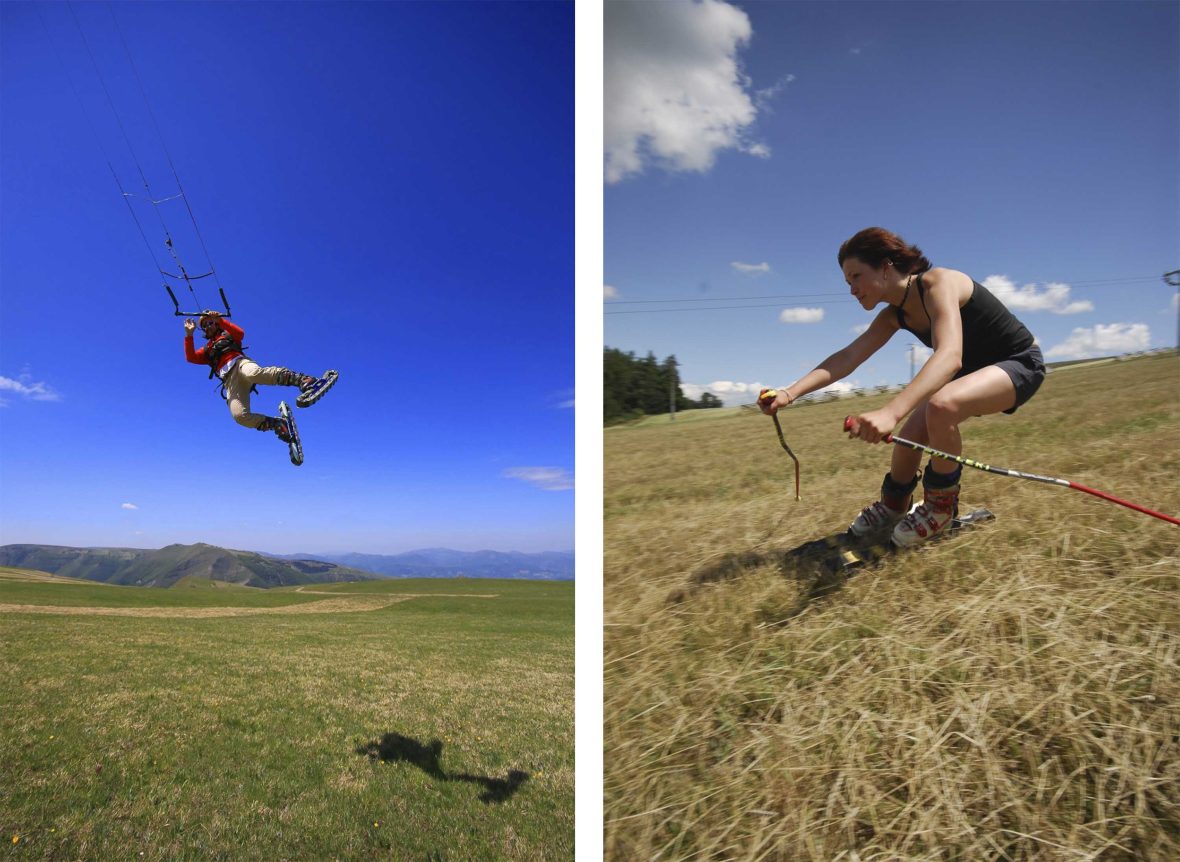
With each passing winter bringing less and less snow to the Italian Alps near writer Illaria Cazziol’s home, she explores some unexpected alternatives for the future of skiing.


With each passing winter bringing less and less snow to the Italian Alps near writer Illaria Cazziol’s home, she explores some unexpected alternatives for the future of skiing.
The Alps are, for the most part, unbelievably green these days.
The mountain ranges that are usually blanketed in snow at this time of year are blazed with narrow stretches of white tracks that splice through the slopes for skiers to navigate. The past several seasons have been visibly affected by drought and glaciers melting across France, Germany, Italy, and other European countries.
Now, at the beginning of 2023, the situation in most of Europe has not improved much. And viral, dystopian videos of people skiing on grassy hills are racking up views on social media feeds. But what those videos may not convey is that grass may indeed be a solution for a sport threatened by climate change.
Yes, grass skiing is a real thing.
The recent loss of snowpack in the Alps—a 5.6 percent reduction per decade in the past 50 years—is a historical loss, according to research by the scientific journal Nature. Yet many European resorts treat the lack of snow as some sort of momentary crisis. We’ve seen resorts rely on short-term solutions like installing snow cannons to artificially freeze water droplets into snow crystals, despite the high water and energy costs associated with this measure. Making artificial snow also causes more water to be lost in the process than would be lost in the natural water cycle, which can aggravate drought. Moreover, this temporary solution doesn’t take into account the worsening climate conditions we’re facing.

According to a study recently published in the International Journal of Biometeorology, the use of artificial snow could guarantee a 100-day ski season in Switzerland until the end of the century from an elevation of 1,800 meters and above. But, more importantly, it would also bring an increased water consumption of about 540 million liters (compared to the current consumption of 300 million liters) per season. But even then, traditional skiing holidays like Christmas would be too warm for snow to accumulate.
Within the grips of the climate crisis, the winter sports industry is being forced to adapt as fast as the climate changes. Until now, the best solutions ski resorts have come up with (besides making snow to address the problem) are indoor ski slopes that use artificial snow, or dry ski slopes, which are basically plastic-covered slides. Is this really the future of a sport that has over 125 million global participants?
Whether you knew it or not, grass skiing has been around for several decades, mostly as an off-season alternative for ski athletes.
To me, an avid skier and snowboarder with a love for the wildest mountains, the answer is a resounding ‘no.’ So imagine my surprise when I found out that grass skiing actually exists as an official sport.
Grass skiing involves skiing down a grassy slope using a special pair of skis. Grass skis are shorter than traditional snow skis (ranging from 65cm to 105cm) and are equipped with 16 sets of wheels, a belt, and caps that work like edges, designed to glide over grass. The design kind-of resembles a caterpillar track fused with rollerblade wheels.
Whether you knew it or not, grass skiing has been around for several decades, mostly as an off-season alternative for ski athletes. Austrian skiers started using rolling skis on grassy slopes in the 1960s to train in the summer months. The sport gained popularity in Europe during the 1970s and 1980s, even making it into World Cup competitions as an official event. However, it never fully caught on and it has remained relatively unknown in the decades since.
“There are probably about 200 to 300 people worldwide practicing grass skiing at competitive levels,” says Fausto Cerentin, technical director and grass ski coach for the Italian National Ski Team. “It was more popular back in the 1980s when it had almost nothing to do with alpine skiing. Today, the two sports are much closer in technique, but very few people practice grass skiing.”
Outside of the competitive world, even fewer people know and practice grass skiing just for fun.
Martin Štěpánek from Grasski.net, who has manufactured and sold the equipment for this sport for about 20 years, says that the demand “was kind-of stable until COVID-19, then it increased due to the restrictions. Now, with the lack of snow, it’s growing again.” The equipment cost is quite low compared to traditional alpine or backcountry ski set-ups. Grass skis will only set you back about €300 a pair. And if you already have ski boots, you can keep them—the ski boots and poles are the same that are used in traditional skiing.
But as we see our seasons and environments change, could grass skiing be a solution for a massive recreation base and tourism sector? It’s hard to say. Compared to alpine skiing, grass skiing offers several advantages in a warming world. One of them is all-season access. During winter, grass skiing can be done in areas that do not receive enough snow for traditional skiing. Offering it as an option for travelers interested in outdoor recreation could help some of the lower-altitude ski resorts, which often struggle to maintain profitability with shorter ski seasons.
Grass skiing has already proved to be a profitable alternative near Turin in Italy. Marco Martina, a manager at the Italian Winter Sports Federation (FISI) for grass skiing, introduced this activity at Sansicario Ski Resort 17 years ago when he gifted 18 grass skis to the municipality. Since then, he’s spent time promoting the practice to other Italian towns and neighboring countries, like Les Deux Alpes in France. At the moment, most of his efforts are geared toward the competitive world, because he believes that, “the starting point is providing an alternative for local competitive clubs to train during every season. If that works, and more people hear about this sport, then everything else hopefully follows.” Meaning, the tourists will follow, too.
Will grass skiing catch on? Will it need to? We don’t have those answers.
Despite being relatively unknown, grass skiing could prove to be a sustainable alternative to traditional skiing—it requires no extra water or energy consumption. Beginners’ slopes at lower altitude ski resorts could easily be used for grass skiing, but also low hills or city parks can become practice grounds. That creates an opportunity for increased access to skiing, which private resorts, with high costs and high barriers to entry, traditionally don’t offer.
“In Turin, there is a municipal field used for grass skiing. After several years, the grass looks denser and thicker, because skiing doesn’t eradicate the grass and increases the oxygenation of the land,” says Martina. “A grass skiing slope can even be beneficial for winter skiing because thick and healthy grass beneath the snow can help maintain natural snow coverage for a longer period.”
So what’s the catch? Some elements of grass skiing make it harder to practice, and might be preventing its popularity. While the technique is similar to traditional skiing, grass skiers need to be more precise in their movements and rely on edges to control their speed. Štěpánek thinks this is one of the reasons grass skiing remains a niche practice: “You can’t slow down as easily on the grass as you could on the snow. There are no brakes.”
Because of this inability to slow down, the practice of grass skiing is regulated to beginner hills for more experienced skiers. “At Sansicario, on the easiest slope, grass skiers can reach 80-90 km/h, going down at the same speed as the super-giant slalom athletes would,” explains Martina.
Probably the biggest reason (aside from lack of awareness) that prevents skiers from trying grass skiing is the structure of the activity. Since you’re not skiing around large resorts, the sport requires more intense activity over a shorter amount of time. “The model would be more similar to a tennis court than the snow skiing model,” Martina says. “You practice it only for a few hours, as a side activity, versus the entire day. Grass skiing is only about 70-80 percent similar to traditional skiing, so both skiers and ski resorts would have to adapt to this practice.”

The most popular alternative to alpine skiing in a warming climate right now seems to be dry slope skiing, which uses the aforementioned plastic surfaces laid onto the slope. It’s more similar to a traditional skiing experience, but the difference lies in the environment—a dealbreaker for those who like nature and mountains to remain as wild as possible.
Will grass skiing catch on? Will it need to? We don’t have those answers. But as climate change continues to impact winter sports, we are likely to see more outdoor enthusiasts turn to alternative activities like this one if they want to keep enjoying a joyous slide down the mountains.






Can't find what you're looking for? Try using these tags: